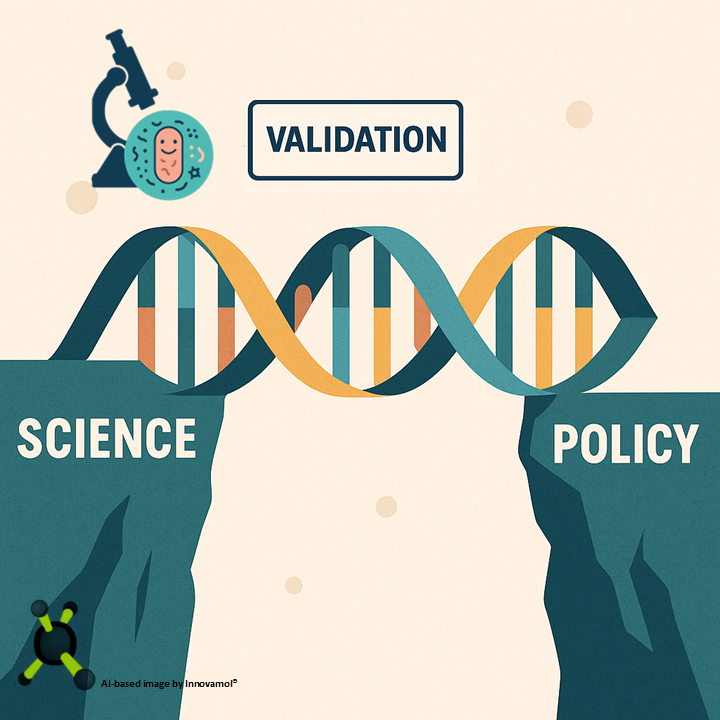The gut microbiome is increasingly being recognised as a key determinant of human health, with its role extending far beyond digestion into immunity, metabolism and neurodevelopment. Yet the incorporation of microbiome science into the frameworks governing food safety in Europe has remained limited. As policy ambition in the EU grows, exemplified by high-level strategies such as Food 2030, a regulatory lag persists, revealing the methodological and institutional inertia that must be overcome to translate this scientific frontier into formalised risk assessment protocols.
Among the most illustrative examples of this divide is the peer review of glyphosate. In 2023, EFSA acknowledged that data on microbiome impacts existed, but emphasised that such findings could not be employed in formal risk characterisation, owing to the absence of internationally harmonised guidelines. This reflects a broader dilemma: over 90 per cent of the top-selling pesticides are associated with data indicating possible perturbation of the human microbiota, yet there are no clear regulatory mechanisms to interpret or act upon such evidence. The dissonance between emerging scientific insight and regulatory application remains important.
However, recent events suggest a slow but gathering momentum. In December 2023, the Food and Agriculture Organization (FAO) convened a technical meeting that concluded with a formal acknowledgment of the need to incorporate gut microbiome endpoints into chemical risk assessment. This meeting marked a turning point in global regulatory discourse, setting the stage for broader institutional alignment. The following month, EFSA published the RIMICIA roadmap—a foundational output of its initiative on Risk Assessment of the Impact of Microbiome Interactions with Chemical Agents. The roadmap outlined a research strategy to fill pivotal knowledge gaps, advocating for the development of reference standards, harmonised analytical methods, and a tiered approach to evidence integration. It also stressed the necessity of international collaboration to achieve meaningful regulatory coherence.
By mid-2024, EFSA reaffirmed that microbiome effects, while scientifically noted in the glyphosate review, remained outside formal risk characterisation due to the absence of validated assessment methods. The subsequent FAO/WHO Joint Meeting on Pesticide Residues (JMPR meeting) marked a shift, recommending the formation of an expert group to define microbiome data requirements, a sign that both scientific readiness and policy intent are converging.
Still, alignment remains elusive. Regulators must balance public expectations with scientific rigour, while EU-funded research networks tackle core challenges such as defining dysbiosis, identifying biomarkers and standardising protocols. Industry, seeking regulatory predictability, is cautious of premature obligations. Consumer groups, in contrast, urge tighter controls, framing the microbiome as a new vector of risk.
Methodology is the central barrier. Without agreed tools, regulators cannot act. A tiered approach offers a way forward: low-risk substances remain exempt; higher-risk compounds would undergo basic screening; and only those showing significant disruption would prompt in-depth investigation.
The microbiome has arrived as a regulatory concern, but the systems to evaluate its relevance are still in construction. What follows depends not just on science, but on our collective ability to translate complexity into consensus. We believe the microbiome marks a turning point for regulatory science, complex, yes, but no longer optional. EFSA’s tiered approach is a sensible start, balancing caution with feasibility, yet success will depend on open dialogue, realistic timelines, and a shared willingness to adapt. If regulators, scientists, industry, and citizens can move beyond fragmented positions, microbiome-informed risk assessment could become a blueprint for smarter, more holistic food safety in Europe.
This work was carried out under a contract with the European Food Safety Authority (EFSA), EFSA/2023/OP/0007 (OC/EFSA/ENREL/2023/01). The opinions expressed are solely those of the contractor and do not represent the official position of EFSA. If you are interested in these kind of works or topics get in touch with us!
“Science is not finished until it’s communicated” – Mark Walport, former UK Government Chief Scientific Adviser

